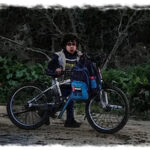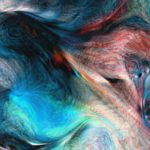“My breasts are, literally, the softer parts of me. As flaunt-worthy as the more culturally-celebrated stronger parts of me,” asserts writer and Odissi dancer Swaati Chattopadhyay
“Swaati, are your breasts in front of your waist?”
“No.”
“Then keep your hand where your breasts are, not in front of your waist.”
That was my Odissi teacher to me, while I danced in our class. Me, suitably in culture shock. I was only 18.
All my life I had been taught – through a strange kind of social osmosis – that a woman shouldn’t draw attention to her breasts. Never ever. Peeping bra straps must be hidden away quickly. Dupattas must cover blooming chests entirely. The more loose and shapeless the outlines of your clothes, the better. There was no template for woman-who-shows-her-breasts.
Swaying Chests and Beautiful Bodies
Imagine my shock, when the women in Odissi, based on the beautiful damsels of Odisha’s temple sculptures, were totally okay with their breasts. Hell, they were in love with them. They had no qualms about drawing attention to them – by swaying their chests with abandon, keeping slightly cupped palms under their breasts gracefully, draping their pallus across torsos without trying to hide anything.
The typical ‘Indian cultural heritage’ ideas I had started out with were shattered — fortunately.
Emulating the body language of the nayikas in Odissi over the years, I learnt the feeling that terms like ‘self-care’ or ‘body positivity’ barely brush past. In the spirit of “show, don’t tell”, the heroines of Odissi taught me quietly, instinctively, experientially — like a sakhi who speaks your inner language — that the body is a beautiful thing.
The body is more than what is viewed from outside, glimpsed in a mirror, or gazed at by a man. Its lines and curves and contours are to be admired, enjoyed, lived in, and taken care of, not to be judged.
As is usual in my life, epiphany of the ideal was followed by that of the what-is. The wrecking ball oscillated from art to life. After the discovery of great pleasure, came the eruption of great rage.
The watershed reckoning of my relationship with my breasts came much later in life. One event that precipitated this was having a child. More specifically, sustaining my child after he was born.
The hypocrisy around breastfeeding
I had read up on every little microscopic thing around pregnancy, labour, delivery, postpartum, and new-born care. I completely ignored breastfeeding. I just assumed it was a ‘natural’ thing. Milk will come in the breast, it will flow, the baby will latch and drink. All hunky dory.
The reality was far from that. Initially, breastfeeding was painful and frightening. It came shrouded in a polarity, either exaggerated rumours or too-sober-to-be-useful facts. The truth is that I had to learn to breastfeed, and so did my child.
Until that happened, it was a frustrating paradox. The most private part of my body, which I was taught to hide away, suddenly became the most important and public part of me. It was the main sustenance for the new-born. Everybody seemed geared towards the great mission to keep this creature alive. And my breasts were at the centre of it.
The sudden transformation of the equation shook me up. I was repelled by how everybody — the neighbour aunty, the doctor, the maid, the driver, the mother-in-law — was suddenly talking about my breasts like they were things. Not my most private, unmentionable, unshowable parts.
I was full of rage at the hypocrisy. At being fooled all my life. I remember living in a state of livid madness those first few weeks of being a new mother. On a mission to challenge all the women with their “dhak lo” advice, I would wear the top three buttons of my nursing gown open. “If you can talk about my breasts openly, might as well see them openly too!” I would scream at them until they left the room, aghast.
Shame teaches us about power
Yet, breastfeeding also did something incredible for me. It exposed the warped ways in which shame teaches us about power. Once that happened, I was freed of the ‘albatross around my chest’.
I hated my breasts while growing up — because I didn’t understand their basic function. Why were they there at all? It always felt as if my breasts were for other people, not for myself. Unlike my stomach, or skin, or other parts (that I was also taught to hate), they weren’t even vital organs.
What were breasts for? At their most powerful, to give pleasure to men, in bed. At their worst, to be carried around like a liability 24/7. To be protected from the same gender who could lunge at them anytime, grope them while you’re trying to enter a crowded stadium to watch a concert with your friends, pinch them when you’re sitting behind your dad on a scooter, squeeze them while you’re trying to get down from a DTC bus. I had to prop my breasts up to titillate and attract men. I had to hide and protect them from the very same pool of humans. Shame was power, and power was shame. It was confusing. And most of all, tiring.
The pleasure my breasts give me
In the 6 months I spent exclusively breastfeeding my child, I realised what breasts are for. This, at the ripe age of 33. That they are also organs, and what amazing organs they are! Why my nipples have so many nerve endings. What lies within – an amazing forest of ducts and capillaries. How beautifully they are hooked on to my emotions and mind. How incredibly they can sustain and nourish another human being.
When I looked at my 6-month-old baby, it was a bit of an out-of-body moment. Here was a creature, one that I had created and animated, literally, out of my own body. Flesh, blood, bones, intent, smiles, and movement. And my breasts were at the centre of this creation. Beautiful and powerful, in so many ways.
Ever since, I make it a point to not lower my voice when I have to say the word breast. I don’t omit the ‘breast’ in breastfeeding, when I have to use it in conversation with anyone, especially an aunty.
The pleasure my breasts give me in bed is mine alone, not dependent on the pleasure they give to a man. I don’t hide them behind high-necked T-shirts in yoga class. I don’t jump less vigorously because ‘people can see them jiggling’. I enjoy their permanent bloom to a bigger cup size in the post-baby years.
I think of it as poetic – ‘my cup spilleth over’. My breasts are plugged to my heart, full of all the emotions in the world. My breasts are, literally, the softer parts of me. They are as flaunt-worthy as the more culturally-celebrated, stronger parts of me. The same breasts that made me feel vulnerable in the past, now make me feel powerful. I truly love them now, because finally, they’re mine.

This essay was written by Swaati Chattopadhyay in response to the prompt, ‘a shameful episode you overcame and thereby questioned shame itself’ in the Ochre Sky Memoir writing workshop facilitated by Natasha Badhwar and Raju Tai.



